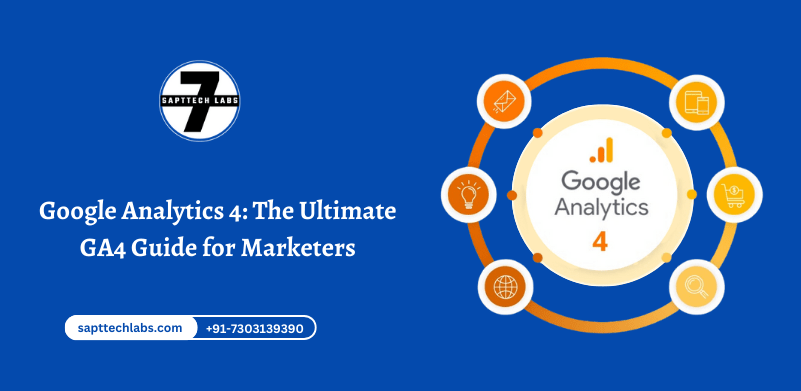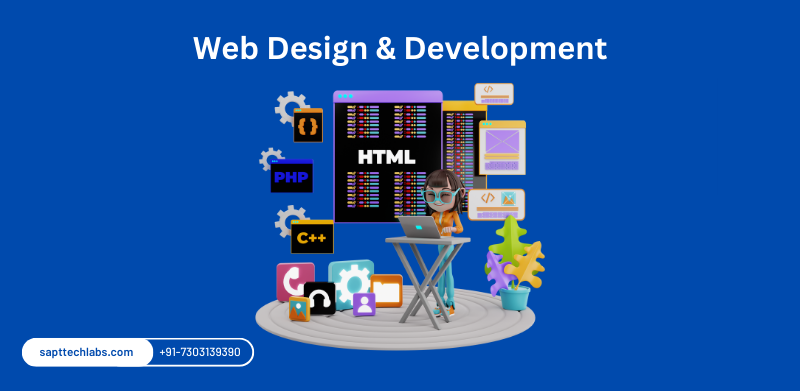Google Analytics 4 (GA4) represents the latest version of Google’s analytics platform. It’s a significant departure from previous versions of Google Analytics, introducing a new data model, enhanced reporting features, and a focus on cross-platform tracking.
For marketers, GA4 is indispensable for comprehending their target audience and evaluating the efficacy of their marketing endeavors. This guide aims to provide an overview of GA4’s fundamentals, enabling marketers to leverage it for improved marketing outcomes.
What is Google Analytics 4?
Google Analytics 4 is a novel analytics platform designed to gather and analyze data from various sources, including websites, apps, and interconnected devices. It employs a fresh data model based on events rather than sessions, simplifying the monitoring of user behavior across multiple devices and platforms.
GA4 introduces several new reporting features to aid in audience understanding and marketing campaign assessment. These features encompass:
User journeys: GA4 tracks user journeys across different platforms and devices, providing insights into user interaction with content and products.
Attribution modeling: GA4 offers diverse attribution models to facilitate comprehension of the most impactful marketing channels in driving conversions.
Real-time reporting: GA4 provides instantaneous updates on website traffic and engagement.
Machine learning: GA4 utilizes machine learning to identify patterns and trends within data, facilitating more informed decision-making regarding marketing campaigns.
Why Should Marketers Use Google Analytics 4?
Marketers have multiple reasons to adopt Google Analytics ga4:
GA4 is the future of Google Analytics, with Universal Analytics set to be phased out by July 2023. Transitioning to GA4 ensures continued use of Google Analytics.
GA4 incorporates novel features, including user journeys, attribution modeling, real-time reporting, and machine learning, which enable marketers to learning google analytics 4 and understand their audience better and assess campaign effectiveness.
GA4 is more flexible and scalable compared to previous iterations, making it an ideal choice for marketers seeking to collect and analyze data from diverse sources.
Difference Between Google Analytics 4 And Universal Analytics
Several key distinctions exist between GA4 Google Analytics and Universal Analytics that marketers should be aware of:
Event-based data collection: GA4 focuses on tracking events instead of page views and sessions. It categorizes events into four types: automatically collected, enhanced measurement, recommended, and custom. The first two types are tracked automatically, while the latter two necessitate custom setup.
Data Streams replace views: GA4 replaces views with “Data Streams” in the account hierarchy, offering individual or aggregated analysis options for enhanced data analysis flexibility.
User Identification & Sessions: Universal Analytics employed cookies for user identification and tracking, whereas GA4 employs machine learning and device identification for establishing user relationships.
Different metrics and reporting structure: GA4 introduces new metrics and alters the calculation methodology for certain metrics such as average session duration and bounce rate. The reporting structure also differs, with GA4 employing the “Analysis Hub” for navigation and exploration reports, replacing the previous custom reports in Universal Analytics.
Goals in Universal Analytics no longer exist: In GA4, goals are substituted by event-based conversions, and automatic goals like pages per session and session duration are no longer available.
Benefits of GA4 for Reporting
GA4 offers several advantages for reporting and analysis. With a growing emphasis on user privacy and cross-platform tracking, GA4 incorporates advanced machine learning techniques to fill data gaps, resulting in a more comprehensive understanding of user behavior and journeys across multiple devices and platforms.
The reporting interface in GA4 is simplified, enabling marketers to identify key trends and anomalies in data more easily. Instead of predefined reports, GA4 employs overview reports presented in summary cards. Marketers can click on these cards to delve into specific metrics or dimensions.
How to Get Started With Google Analytics 4
Getting started with Google Analytics 4 is a straightforward process. Follow these steps for google analytics 4 setup:
- Visit the Google Analytics 4 website: https://analytics.google.com/analytics/academy/course/5/.
- Sign in to your Google account.
- Click on “Create property.”
- Choose between “Web” or “App.”
- Enter the URL of your website or app.
- Click on “Create.”
Once you’ve created your GA4 property, install the Google Analytics tracking code on your website or app. You can locate the tracking code in the “Measurement ID” section of your GA4 property settings.
Conclusion
Google Analytics 4 empowers marketers with advanced capabilities and insights to track user behavior and make data-driven decisions. By transitioning from Universal Analytics to GA4, marketers can leverage features such as pathing analysis, exploration reports, and cohort analysis. Setting up GA4 analytics is a straightforward process, and the benefits for reporting and analysis are significant. By adhering to best practices for GA4 reporting, marketers can gain valuable insights into user behavior, optimize marketing campaigns, and drive business growth. Make the switch to GA4 today and unlock the full potential of your data.



